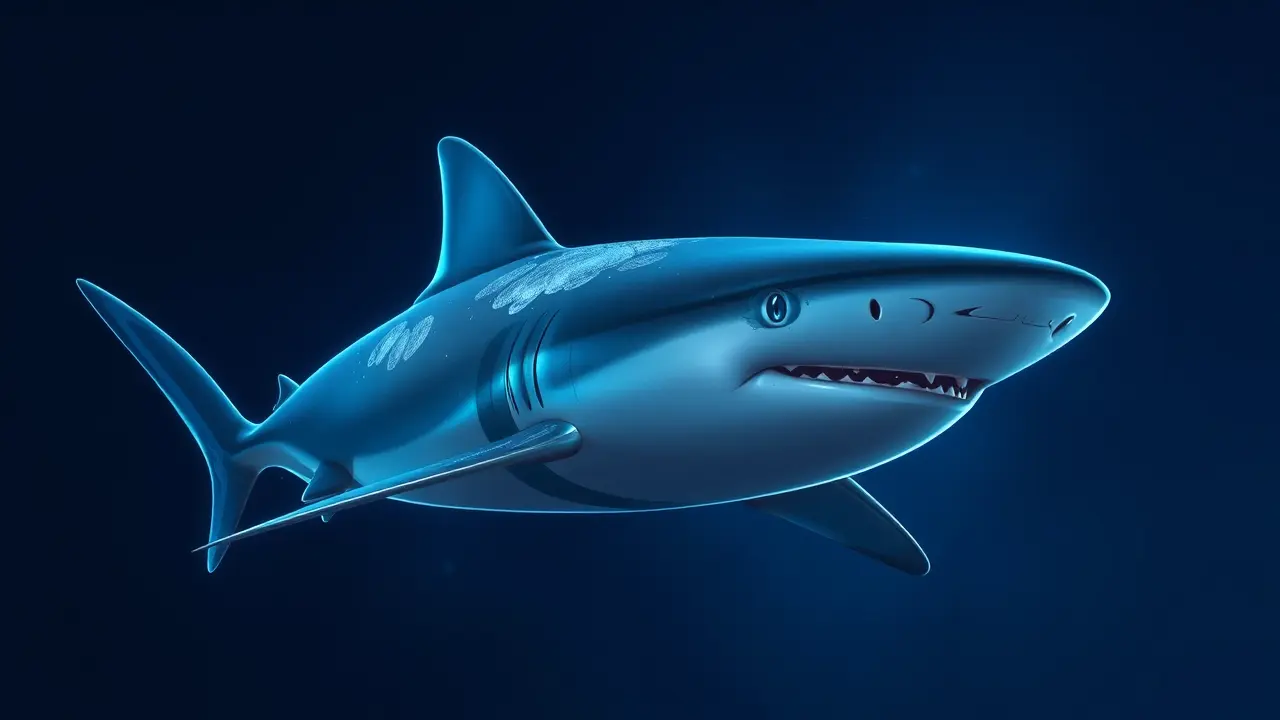
SciencebiologyGenetics
DNA in seawater reveals lost hammerhead sharks
RA
Rachel Adams
5 hours ago7 min read1 comments
In the quiet, unseen currents of our planet's oceans, a profound scientific breakthrough is unfolding, one that offers a fragile lifeline to some of the sea's most enigmatic and imperiled inhabitants. The story begins not with a dramatic sighting or a harrowing capture, but with a simple, almost magical act: a researcher collecting a vial of seawater.Within that unassuming sample, suspended amidst the salt and plankton, float the ghostly genetic echoes of life—environmental DNA, or eDNA. This is the revolutionary tool now being deployed in a desperate race against time to locate and protect the lost hammerhead sharks.For years, tracking these majestic, nomadic predators has been a monumental challenge. Their vast oceanic ranges and often deep-water habits make traditional survey methods—aerial counts or fishing surveys—notoriously unreliable and intrusive.The very act of finding them often meant disturbing them, a paradox conservationists have long struggled with. But this new eDNA test, a feat of molecular detective work, changes the entire paradigm.By filtering seawater and applying sophisticated genetic probes that can identify the unique DNA signature of a scalloped or great hammerhead shark, scientists can now confirm their recent presence with a certainty that was previously impossible. They are, in effect, reading the memoirs the sharks have left behind in their liquid world, a biological confession whispered on the currents.The implications for conservation are as deep as the ocean trenches these sharks sometimes frequent. For a species like the scalloped hammerhead, listed as critically endangered on the IUCN Red List due to catastrophic population declines from relentless finning and bycatch, knowing exactly where they still gather is the first and most critical step toward saving them.This isn't just about counting individuals; it's about mapping the sacred geographies of their existence—their hidden nurseries, their forgotten migratory highways, their final, critical refuges. This genetic intel allows for the strategic and urgent establishment of Marine Protected Areas (MPAs) or the enforcement of seasonal fishing bans in precisely the right locations, a surgical strike of policy informed by the most intimate data imaginable.Imagine a future where a customs official, suspecting a shipment of illicit fins, could test the runoff water and genetically match it to a vulnerable population in a specific oceanic region, providing irrefutable evidence for prosecution. The potential extends beyond hammerheads, offering a census for the silent and the unseen, from the cryptic angel shark to the rarely encountered oceanic manta ray.Yet, for all its promise, this technology is not a panacea. It tells us a shark was here, but not how many, not their age, not their health.It is a powerful clue, not the complete dossier. Its effectiveness is also at the mercy of the very environment it seeks to protect; ocean currents can disperse genetic material, and UV radiation from the sun can degrade it, creating a complex puzzle of time and distance.The work of dedicated marine biologists, who spend countless hours on the water for direct observation, remains irreplaceable. But what eDNA provides is a force multiplier, a way to scan vast, trackless blue deserts for signs of life without a single net or hook.It is a testament to human ingenuity, a tool born from our desire to understand and protect, rather than exploit. In the grand, tragic narrative of ocean conservation, where headlines are too often dominated by bleaching corals and bleached whale bones, this is a story of quiet hope.It is a reminder that even as we face the consequences of our actions, we are also capable of creating elegant solutions. The hammerhead's distinctive silhouette, an evolutionary marvel that has cruised our seas for millions of years, is an icon of the wild ocean. That we are now learning to listen for its genetic whisper in a handful of water is perhaps one of the most promising and poetic developments in modern conservation, a chance to ensure that this ancient lineage does not vanish on our watch, leaving behind only a silent, empty sea.
#featured
#eDNA
#hammerhead sharks
#endangered species
#genetic testing
#marine conservation
#environmental monitoring
Stay Informed. Act Smarter.
Get weekly highlights, major headlines, and expert insights — then put your knowledge to work in our live prediction markets.
Related News
© 2025 Outpoll Service LTD. All rights reserved.
